Hardwood floors offer homeowners options that complement nearly any space. With many varieties of hardwood flooring and wood species, you can select different colors, grains, textures, and much more.
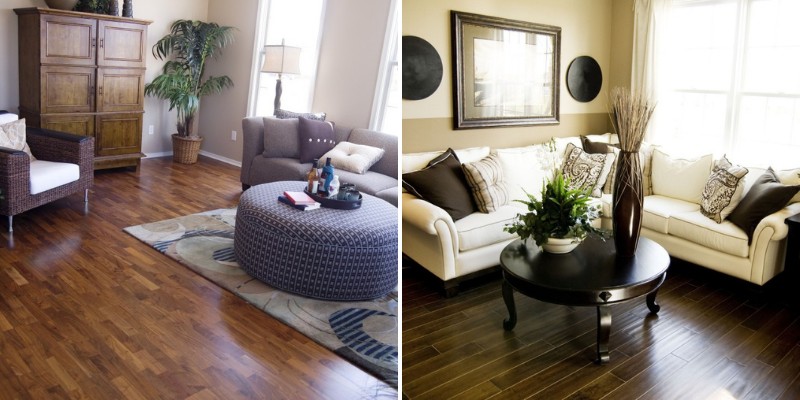
There are many advantages to this type of flooring over other choices like carpet.
For example, hardwood floors provide an organic look to the home that brings the warmth of natural materials into each room.
Nature’s color pallet never goes out of style and can fit any décor from traditional to modern.
In addition, hardwood floors provide a much healthier interior environment as they don’t trap dust and debris like carpet.
If you struggle with allergies, replacing the carpet with hardwood flooring would likely reduce your symptoms.
Lastly, hardwood floors are remarkably tough and can stand up to children, pets, and significant foot traffic well beyond other options.
You can even refinish old hardwood floors to bring them back to pristine condition, and they’ll last for decades.
Let’s dive into the many varieties and types of hardwood flooring with a list of 18 fantastic options you can install in your home today.
Categorized by How They are Made
There are many great choices with regard to hardwood flooring, and each offers unique qualities that set it apart.
One of the first differences you’ll notice between hardwood flooring options is how they’re made.
You can choose either Solid Hardwood Flooring or Engineered Hardwood Flooring.
1) Solid Hardwood Type
Solid Hardwood Flooring is entirely crafted with solid wood throughout and is therefore incredibly durable.
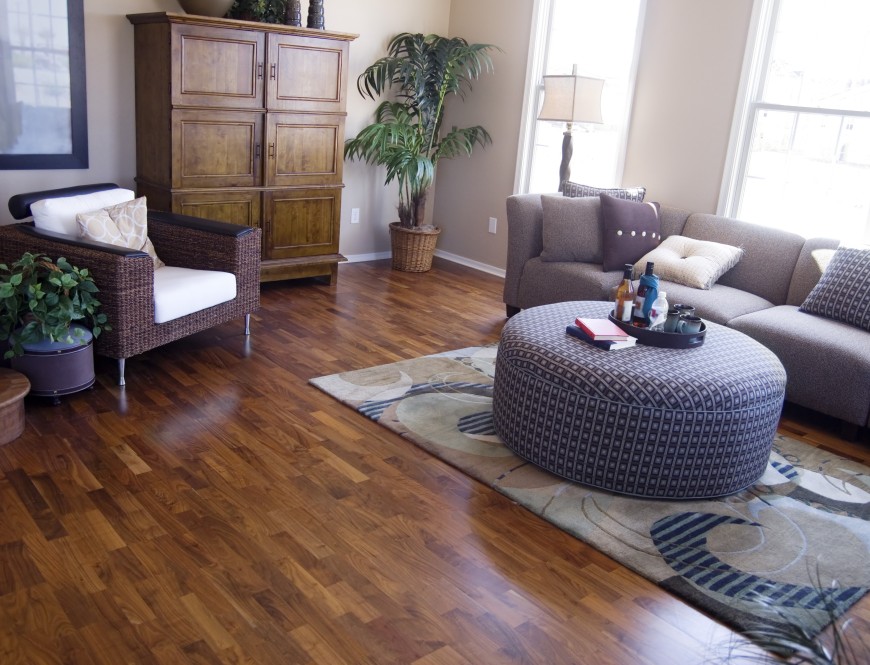
There aren’t any other materials mixed in to add to the thickness of each plank. Each plank is usually designed with tongues and grooves that allow each piece to lock to one another during installation.
One of the benefits of Solid Hardwood is that you can sand and refinish your floors after many years to bring them back to life.
In fact, over the course of up to a century, you can sand and refinish your Solid Hardwood Floors up to three times.
2) Engineered Hardwood Type
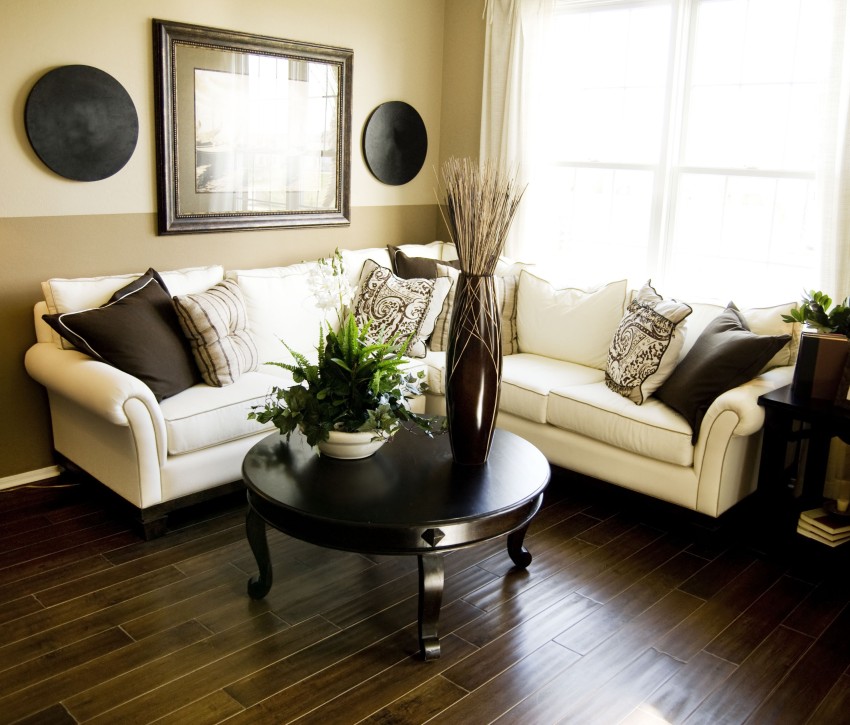
Engineered Hardwood Flooring looks very close to Solid Hardwood on the surface; however, they are made differently.
Engineered Hardwood planks have a thin hardwood surface that sits on top of several layers of high-quality plywood (backing), which makes up most of the thickness.
While Engineered Hardwood provides a similar look, it doesn’t cost as much as Solid Hardwood.
For homeowners, Engineered Hardwood is a typically less expensive option with an easier installation.
Categorized by Wood Species
Another aspect of hardwood floors you’ll need to consider is what type of wood each is made from.
There are many popular and stunning choices that will determine the finished look of your floors.
3) Oak
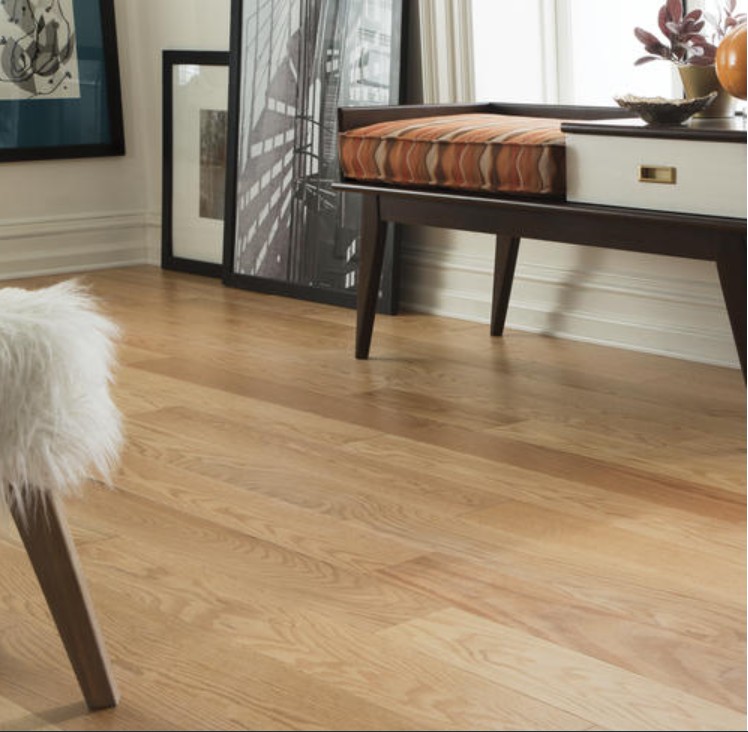
Oak is one of the most popular choices for hardwood flooring due to its hardness.
Each species of wood reacts differently to pressure, which can include foot traffic across your home.
The Janka Hardness scale measures these differences and provides a rating to compare wood species.
Red Oak sits at a 1290 Janka Hardness, and White Oak is even harder at 1360.
Oak hardwood floors are known for their stunning grain patterns unique to each plank and accept stains with ease.
There are also options for wide planks and many varieties of sizes, making Oak a flexible choice in your home.
4) Cherry
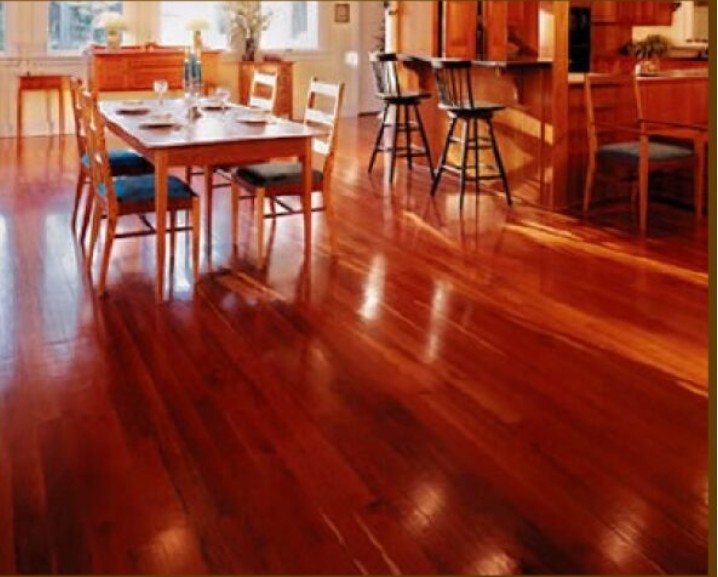
Cherry flooring offers a stylish option with plenty of eye-catching shine. Cherry can come in darker or reddish shades that can balance the color tones of a room and provide a “wow” factor.
Black Cherry carries a 950 Janka Hardness rating, while Brazilian Cherry offers a much harder 2350 rating.
5) Maple

Hardwood floors constructed from Maple provide a nice wood grain that isn’t as pronounced as Oak.
With softer lines, Maple flooring provides organic patterns that complement the design of a room and incorporate into many styles seamlessly.
Hard Maple is a dense option with a 1450 Janka Hardness rating, making it a durable and long-lasting choice.
6) Hickory
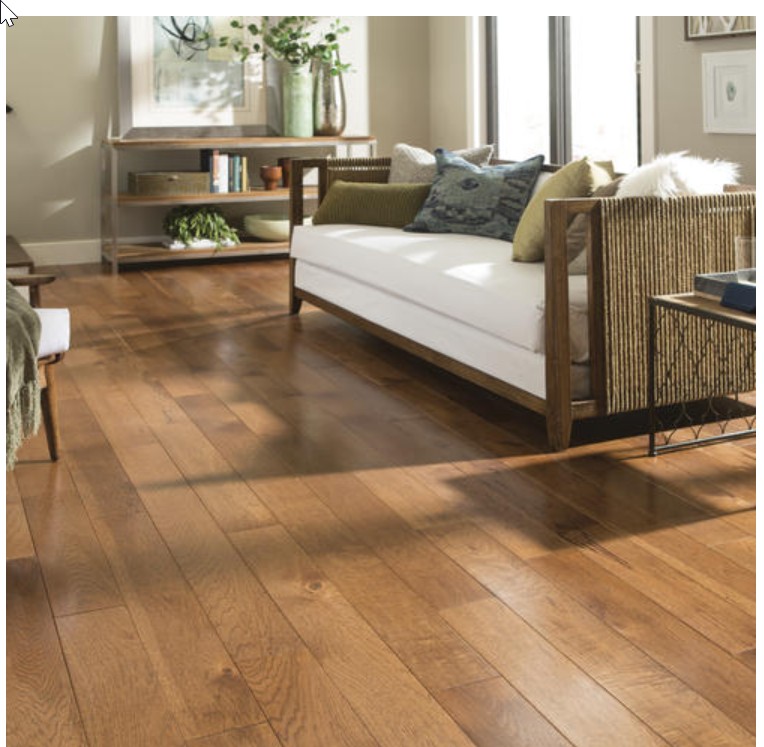
Another excellent choice for flooring is hardwood made from Hickory. You can expect to see Hickory in light brown, tan, white, and cream colors.
One of the most significant advantages to Hickory is its density and hardness. At a Janka Hardness rating of 1820, this material is much more difficult to scar or scuff than other species.
Other than Brazilian Cherry, Hickory is the densest material on this list.
7) Bamboo
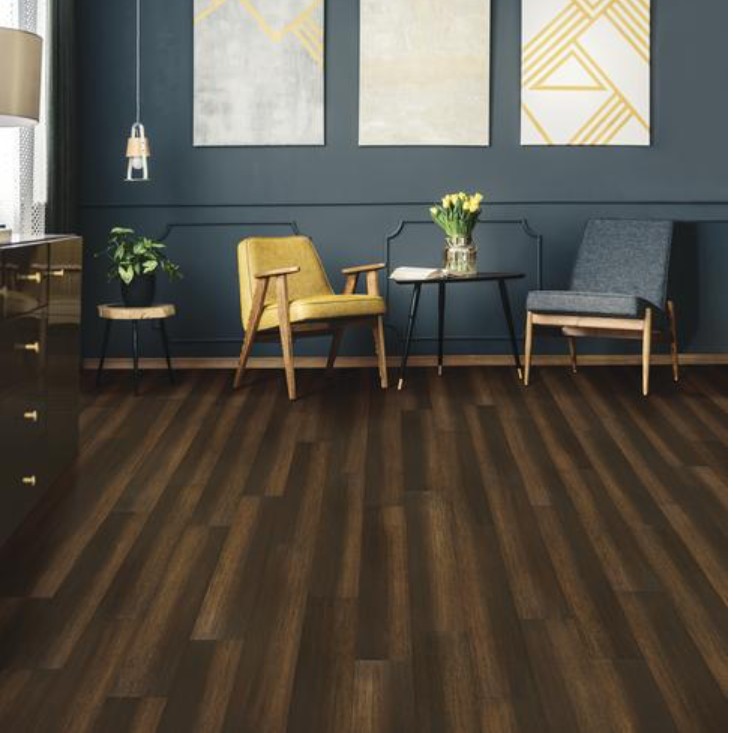
One of the first aspects of Bamboo flooring you’ll likely notice is the exotic patterns on display.
With unique visual characteristics, Bamboo creates a dramatic addition to any room and also possesses resilient qualities.
With a Janka Hardness rating of around 1300, it’s denser than Black Cherry or Red Oak.
8) American Black Walnut
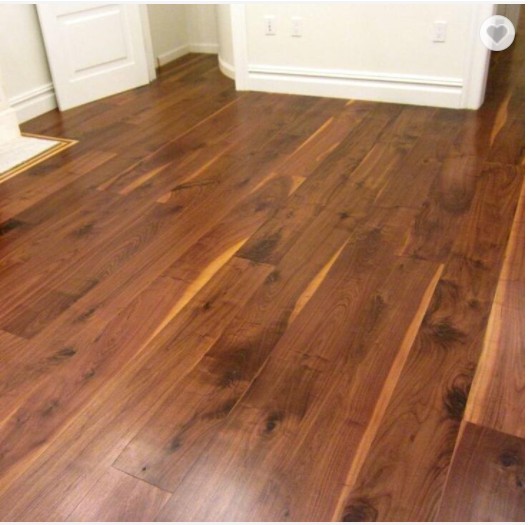
If you are looking for more rustic and natural wood flooring, American Black Walnut is an excellent choice.
This material provides features like knots, unique colors, and various grains that bring an earthy warmth to any space.
American Black Walnut is on the lower end of the Janka Hardness scale at 1010; however, it ranks just above Black Cherry for a durable and lasting floor choice.
Categorized by Finishing Type
Hardwood flooring also comes in either a finished or unfinished state, depending upon your project goals.
9) Unfinished Hardwood Flooring
With unfinished planks, after installation, you’ll need to apply stain and wood floor treatment for them to be ready for foot traffic.
If you have the perfect stain picked out, unfinished hardwood flooring is an excellent option as you can customize the details to your specifications.
However, while it may allow you more color choices using unfinished hardwood, it also adds extra work to the project.
10) Finished Hardwood Flooring
With finished hardwood flooring, stain and protective coating are already applied at the factory before shipping.
Therefore, once you receive the hardwood planks and install them, you’re flooring project is complete.
Another benefit to finished hardwood is that there isn’t a lingering odor following install.
As a result of stain and polyurethane applied to unfinished hardwood planks, your home will need time to air out.
Categorized by Installation Type
11) Nail/Staple Down
Typically, solid hardwood flooring must be installed using nails, presenting some challenges, especially to inexperienced do-it-yourself homeowners.
This installation method requires specialized tools and isn’t very forgiving when it comes to mistakes.
Even though each plank securely fastens to the subfloor, there is still the possibility of cracking or squeaking, especially when the weather is dry.
12) Glue Down
Another excellent option for either solid or engineered hardwood floors is using adhesive to fix the planks directly to the subfloor.
Each installation method relies on an adequately leveled subfloor; however, with adhesive, subfloor preparation is critical.
The hardwood floors will follow the contours of the subfloor, and any low spots or uneven areas will likely cause problems.
In addition, this method can raise the installation cost on materials or labor costs by as much as 1$ per square foot.
On the plus side, this method provides the least amount of movement or sound and can make finishing work like adding molding much more straightforward.
13) Floating
Arguably the easiest installation method, floating installations involve planks with interlocking parts that clamp together on top of an underlay that sits on the subfloor.
The locking tongue and groove system removes the need for nails or adhesive and binds together, creating a durable floor.
You can add glue to the tongue and groove pieces before locking them together; however, this isn’t necessary in many cases.
The downside to the floating installation method is that the sound and feel are often less weighty than that of a solid hardwood nailed into place.
14) Nail/Glue Down
When using wider planks of either solid or engineered hardwood, it can become necessary to use both nails and glue for an optimal installation.
With nails alone, squeaks can become prevalent after the wood has settled with changing air temperatures.
By including a bead of glue on the width of each plank, you can help eliminate extraneous noise for a more solid feel.
This method does require additional time and money but can be well worth it for an outstanding result.
Categorized by Texture
Often an overlooking aspect of hardwood flooring is texture. The texture is actually an essential component of the look and design of the room.
Each type of texture compliments different styles and can add an extra special something that brings out an interior’s potential.
15) Hand Scraped
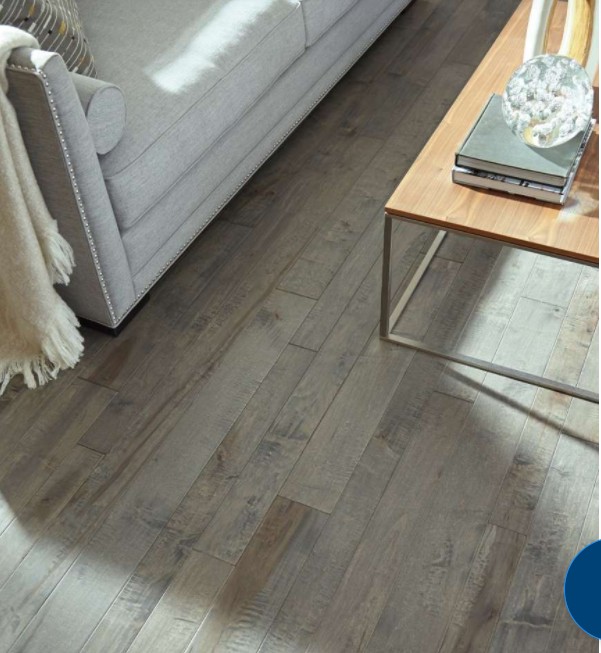
If you’re looking for a hardwood floor that will pair with an eclectic or unconventional design, hand-scraped combines both traditional and modern characteristics.
This texture walks the line between clearly defined genres and perfectly complements more daring spaces.
16) Distressed
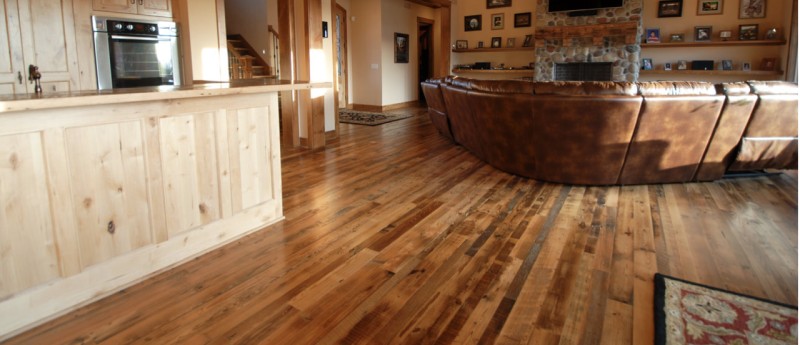
If you’re looking for the ideal hardwood to complete a rustic or even industrial space, distressed is a fantastic choice.
The distressed texture brings out even more wood elements for better-defined grains with a stylish but worn appearance.
This type of texture creates the feeling that the flooring has been part of the home for some time, creating a homey warmth.
17) Smooth Sanded
One of the most popular choices for modern designs is the smooth sanded hardwood flooring texture.
If you’ve seen rooms with glossy and shinney wood floors, they were likely smooth sanded.
Modern interior design includes elements such as straight lines, minimalist details, and smooth contours, and the smooth sanded texture is ideal under these circumstances.
The drawback of this style is that scratches or indents are more readably visible since the surface of the planks is so uniform.
With this texture, you’ll need to be extra careful about accidentally scoring the floor as it will be more noticeable.
18) Wire Brushed
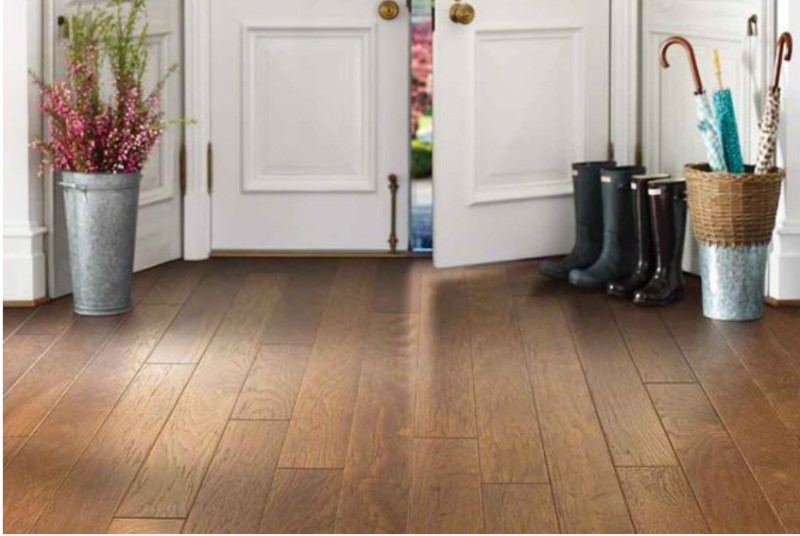
Another popular choice for hardwood floor textures is called wire brushed. This texture is made using a wire brush tool to scrap across the planks and add lots of character.
This texture can bring out additional details in the wood, such as the soft grain or the tree’s growth ring.
Not only do these details add to traditional décor, but they also provide a way to hide any imperfections.
While a knick or scratch may mare a smooth sanded hardwood plank, you won’t notice any additional marks on wire brushed planks.
Wire brushed texture may be ideal for families or pets as they hide accidental groves or scratches endured during the floor’s life.
Related Posts
- Different Types of Finishes That Make Concrete Floors Aesthetically Appealing
- 10 Main Pros and Cons of Acid Stained Concrete Floors
- 3 Methods to Remove Candle Wax From Your Carpet (With Iron, Hair Dryer, Natural Products)
- 13 Types of Carpets for Your Home (By Material, Pile, Padding)
- How Much Does it Cost to Epoxy a Garage Floor? All Details Below
- 20 Different Types of Tiles for Home Flooring, Walls, Countertops, Backsplash
Leave a Reply